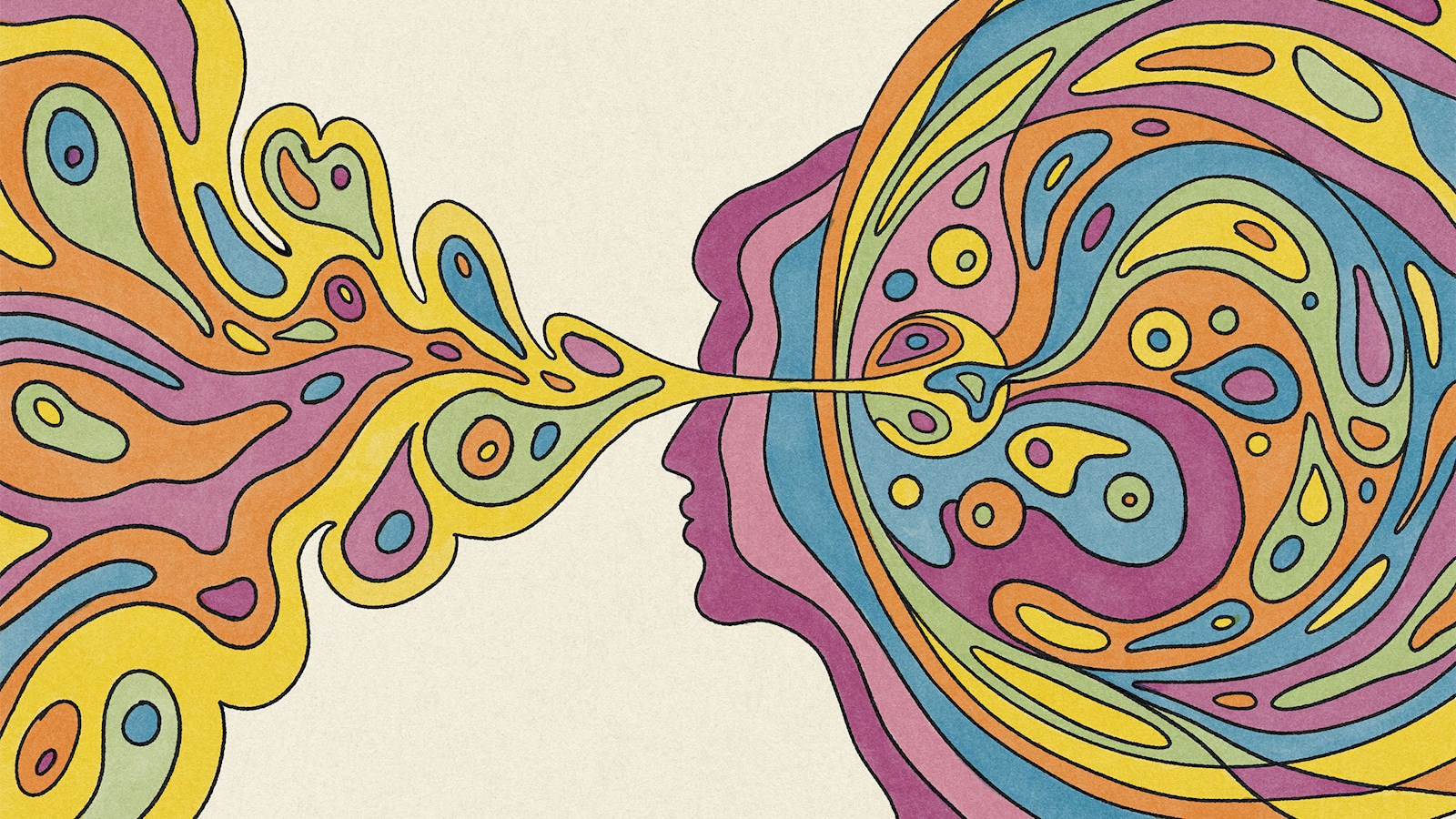
Explicit perception versus emotion in multi-crises
There is a difference between consumers' perceptions of global crises and their emotional reaction to them, say Marcel Buettner and Lukas Burs of GroupM Science
Since the beginning of the COVID pandemic in 2020, consumers are witnessing ongoing crises. Public discourse often frames these crises in terms of clear changes in consumer behaviour, especially regarding saving money.
Although we do not doubt that crises will impact consumers’ behaviour, we question simplistic arguments such as: crises negatively impact consumer sentiment, leading to a reduced willingness to spend and thus negatively impacting the economy.
In contrast, we hypothesise that multi-crises lead to the forming of ‘crisis-proof’ habits that act as a kind of conscious defence against the current crises. Continuing their everyday lives and keeping up with ‘normal’ consumption habits might give consumers orientation and stability.
In addition, we work with the assumption that there are different groups of consumers. Some will be more resilient than others and will be less prone to consume only in ‘crisis mode’, even letting smaller uplifts in their emotions trigger more spending. And finally, being affected personally might highly impact consumers behaviour.
More immediate issues such as the movement restrictions that were in place during the Covid pandemic might have a more negative impact on people’s emotions than less tangible crises, such as the war against Ukraine.
Explicit worries – that’s relevant
We can confirm what other studies found: based on concrete prompts, consumers’ concern about current developments is stable – they are obviously thinking about the crisis. In addition, worries on more specific issues might vary over time, e.g., while worries about energy supply were high during the autumn of 2022 they mostly disappeared after the winter.
Figure 1: We would now like to know your position on the following statements. For each statement, please indicate how much you agree or disagree with it.
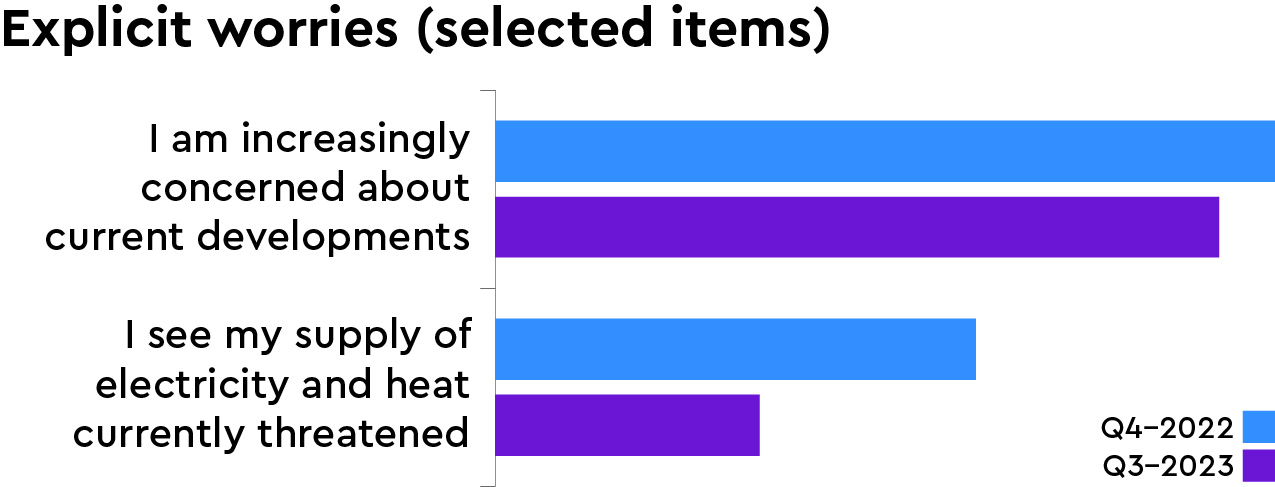
The responses to these prompts, measured on a scale from e.g., ‘totally disagree’ to ‘totally agree’, show a clear picture of consumer behaviour, right? We believe that the answer is not that clear. Yes, such worries are relevant, and many brands have faced challenges regarding declining spend. However, our findings show a differentiated range of consumer behaviour. In particular, emotions appear to be affected very differently (compared with the surface-level perception of crises) and thus should be considered as well.
Emotions – that’s complex
Although current developments clearly impact consumer perceptions negatively, implicit measurement of emotions show fewer negative results. We measured consumers’ current emotions using implicit stimulus response tests. Joy, satisfaction and hope – three terms with positive connotations – remained in the top three terms with the strongest associations.
However, the picture gets complex when you look at the details. In the most recent survey, consumers reached the highest level of worry and frustration ever measured during the last year of the longitudinal study. At the same time, the shopping and buying moods are also at the highest level (Figure 2).
Figure 2: We would now like to learn something about your current mood in general. Please decide spontaneously whether the word displayed in each case matches your current feelings or not.
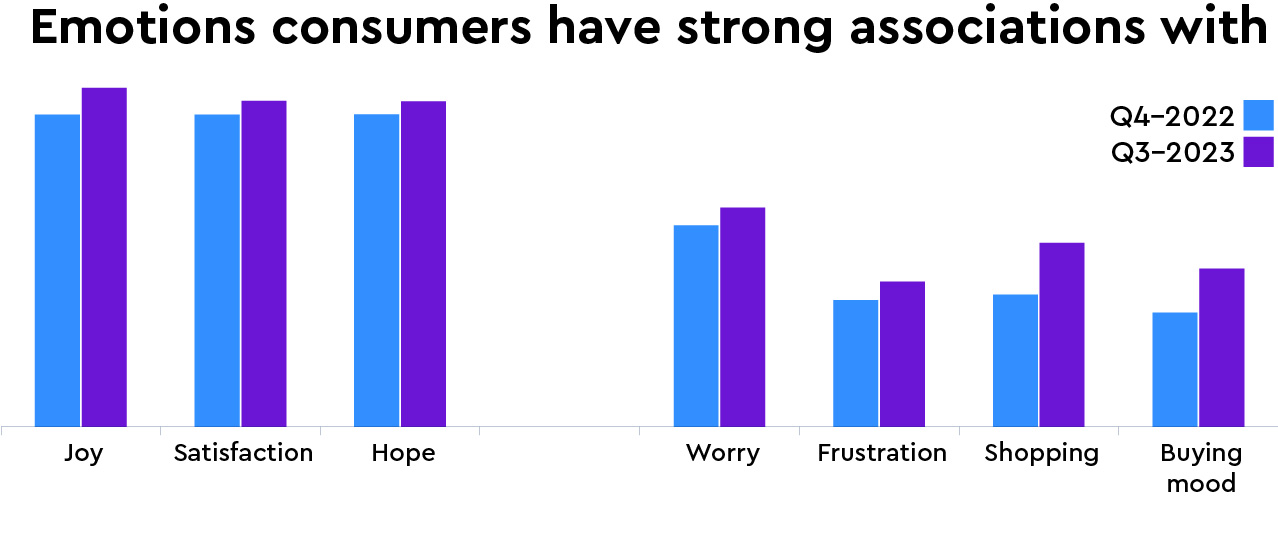
This is to say that consumer behaviour is not easily described in one sentence. Emotions are volatile and, although crises can impact everyday life in a clearly visible way, we do not always see a uniform emotional response.
Every industry has its own emotional profile
Against the background of the complexity outlined above, brands must be adaptable in their communication with their audiences in times of crises. To do so, we wanted to stimulate the debate by introducing individual emotional profiles for different industries. These profiles were also measured implicitly, and they depict how consumers perceive a certain industry over time on six dimensions.
For example, a comparison of personal care and fashion shows that fashion is a bit more strongly associated with distraction and less with ‘essential’. Personal care is slightly more connected to ‘treat’ and shows increasing scores for ‘spend’, indicating rising willingness to spend money over time (Figure 3).
Figure 3: Again, please decide spontaneously whether the words displayed match your current buying behaviour in the respective industry.
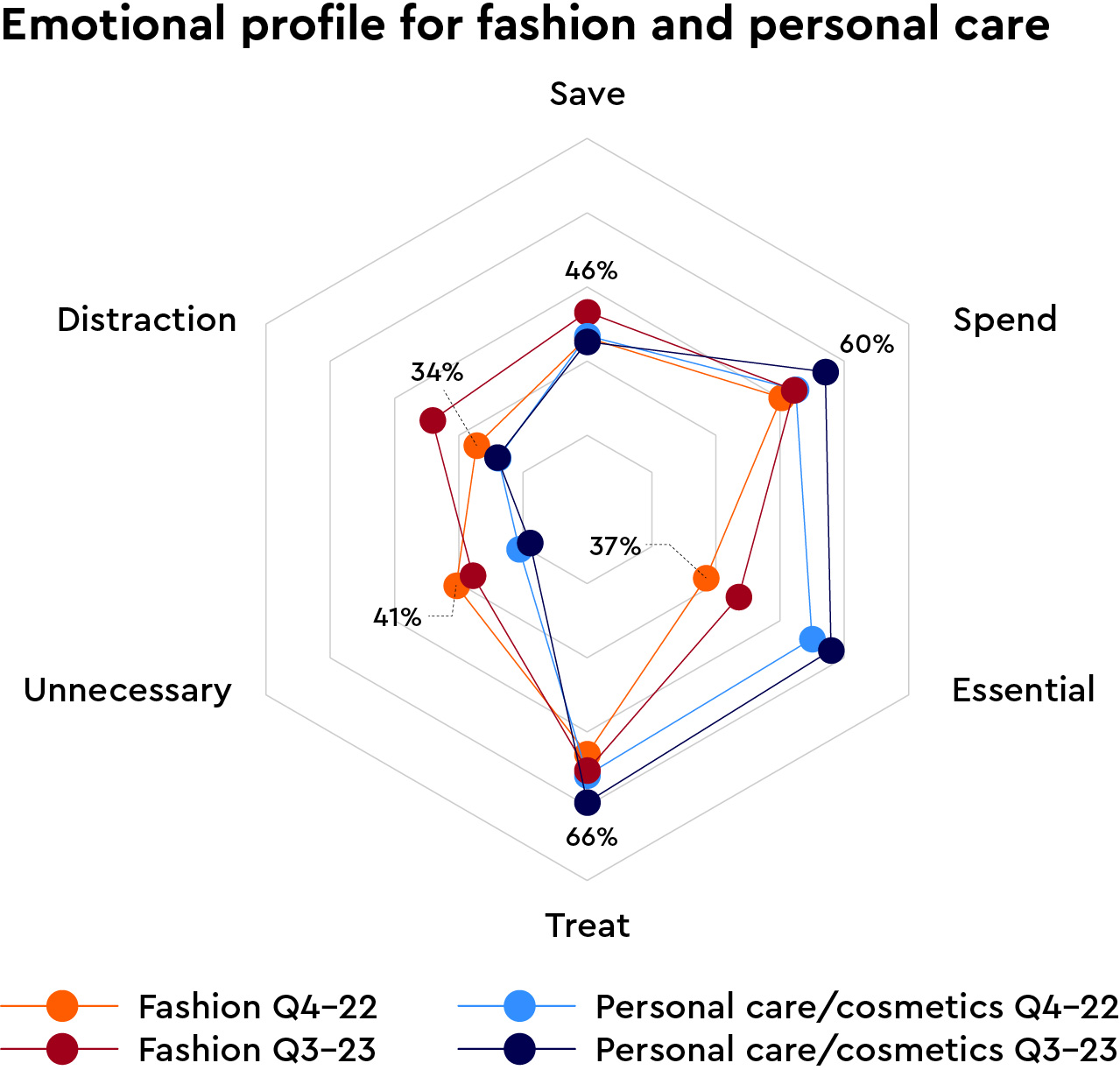
These emotional profiles will help in understanding consumers' current emotions towards certain product categories and give marketers a more precise tool for targeting. However, the findings outlined so far do not provide enough depth to design tailored communications that take both consumers’ overall emotions, as well as industry specific necessities, into account. Thus, we recommend going one step deeper – into consumers’ requirements for advertisements on an industry level.
Figure 4: Please decide in each case quite spontaneously whether the term shown in each case is important for you personally, for advertising of companies / brands of the respective industries.
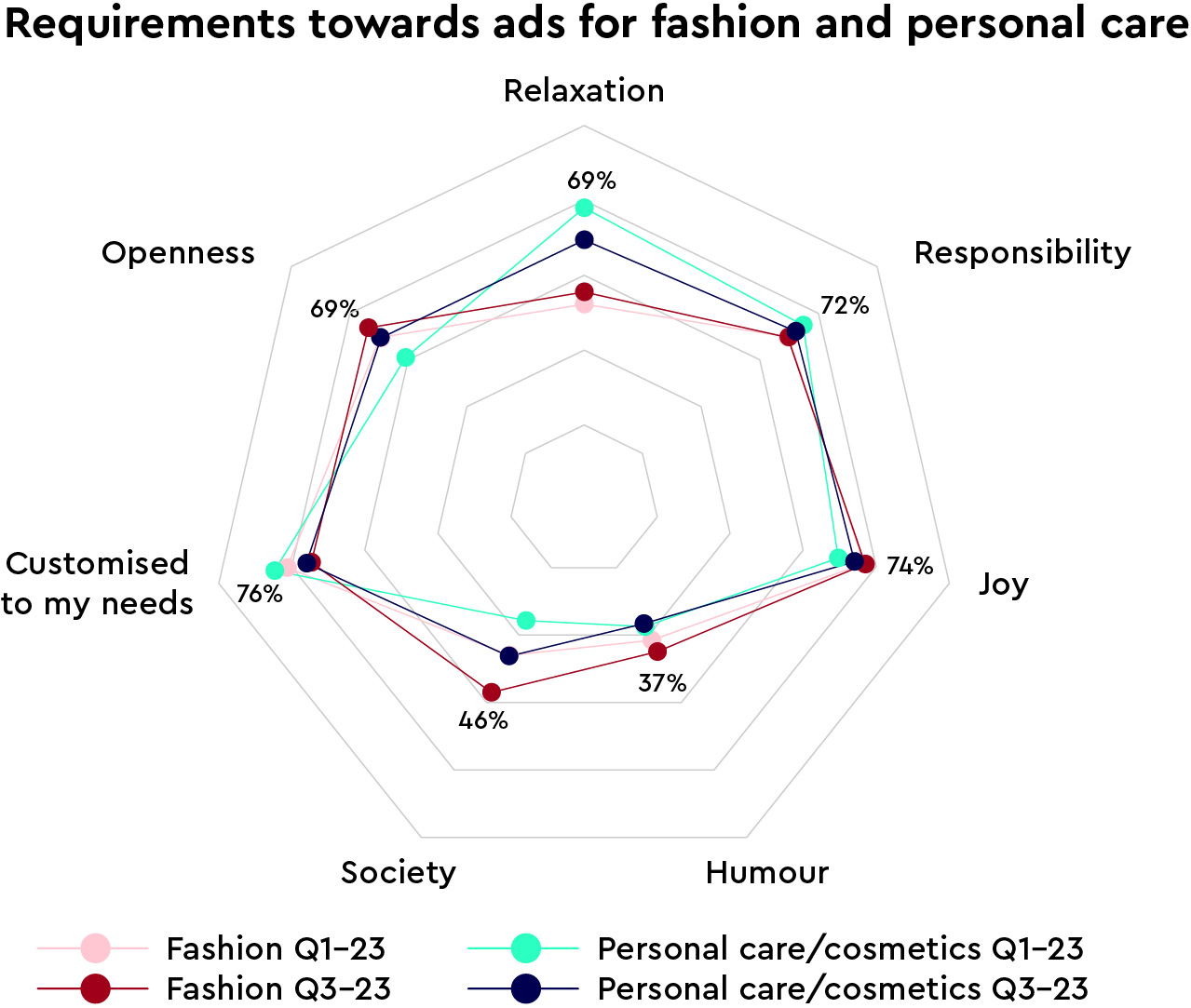
For the industries in the example – fashion and personal care – several aspects stand out (Figure 4). ‘Joy’ and ‘responsibility’ show up as time-stable and are also particularly important advertising motives. Individuality, which has different meanings for each customer, is something that is more critical in a time of crisis such as in Q1-2023.
Industry-specific factors can also be identified. For example, ‘relaxation’ is clearly more influential for personal care than for fashion advertising. When tailoring communications here, ‘relaxation’ should be connected to the overall positive emotions that consumers experience.
An application of this way of thinking about consumer behaviour during multi-crises will lead to a fit between current consumers’ emotions, the target industry’s emotional profile at that time and ad requirements. We are convinced this approach is valuable for our clients and will help them act successfully in an increasingly complex world.
Acknowledgments: The authors would like to thank Volker Stubbra, Lara Baschour and Lukas Mueller for their valuable feedback during the design of the study and the writing of this submission to Atticus 2023.
published on
30 November 2023
Category
More in Communications

Rebranding cancer: how brands heal and hurt
Along with consumer brands, the ‘brand’ of condition or event influences us.
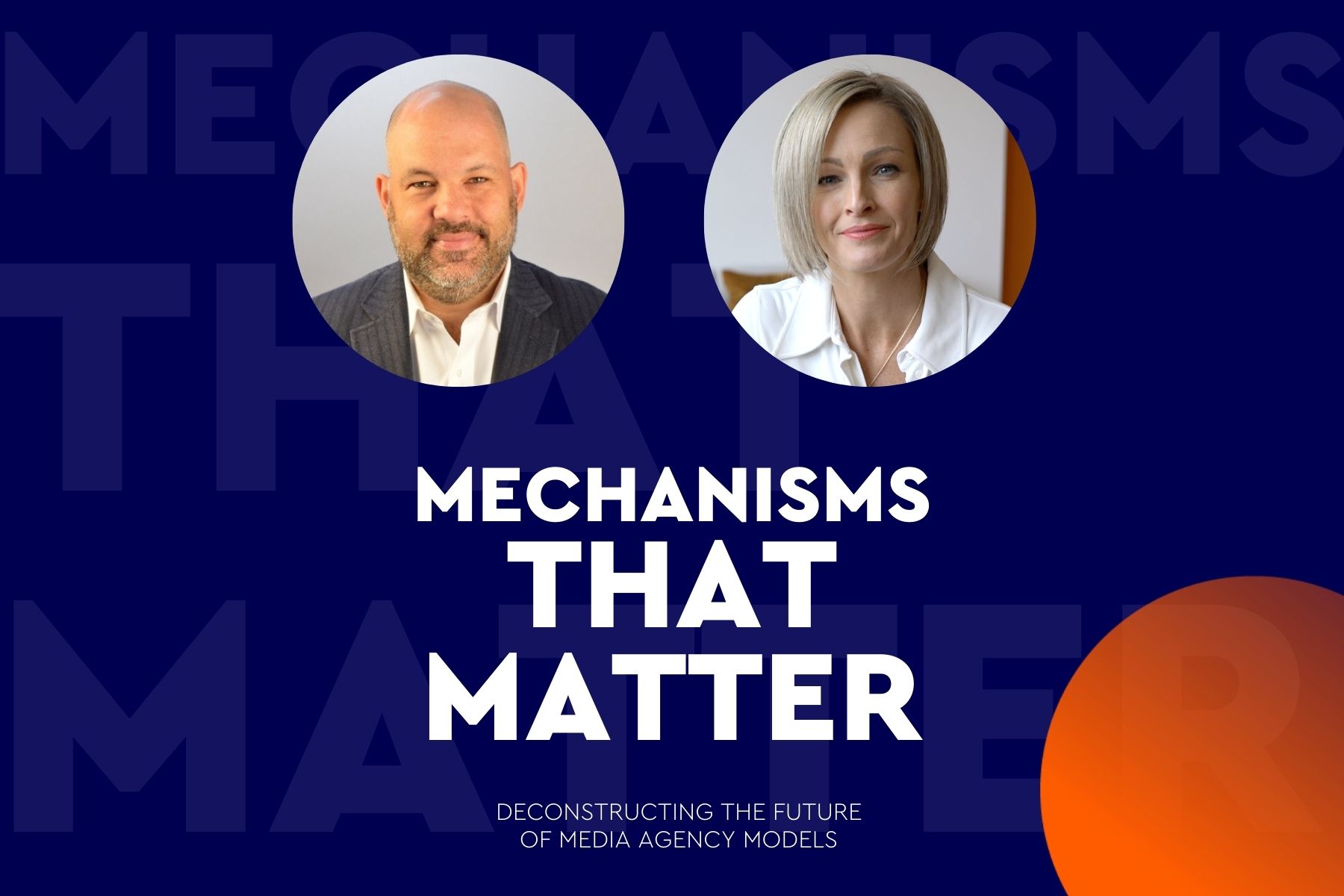
Mechanisms that Matter – Inside WPP | Ford’s revolutionary marketing model
How a process created on the factory floor over 70 years ago has transformed ops for the auto giant

How to build your brand in-game
A new research report from WPP and SuperAwesome

